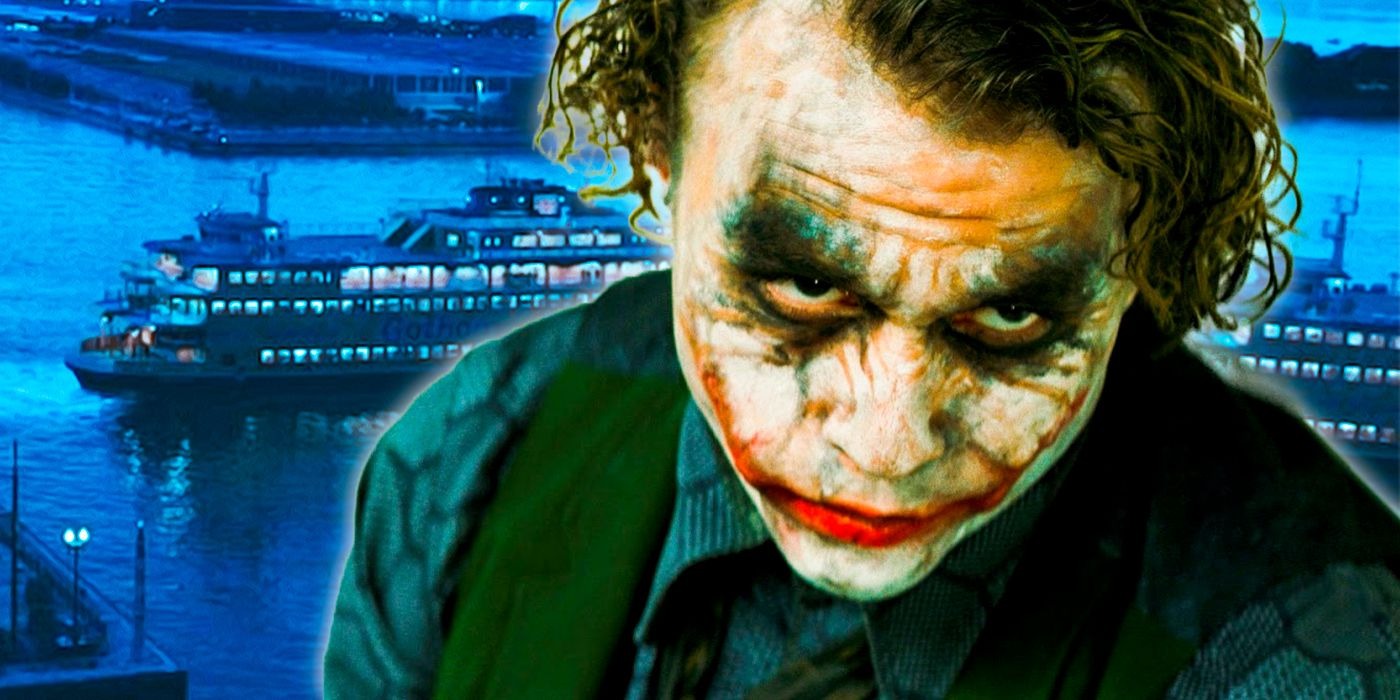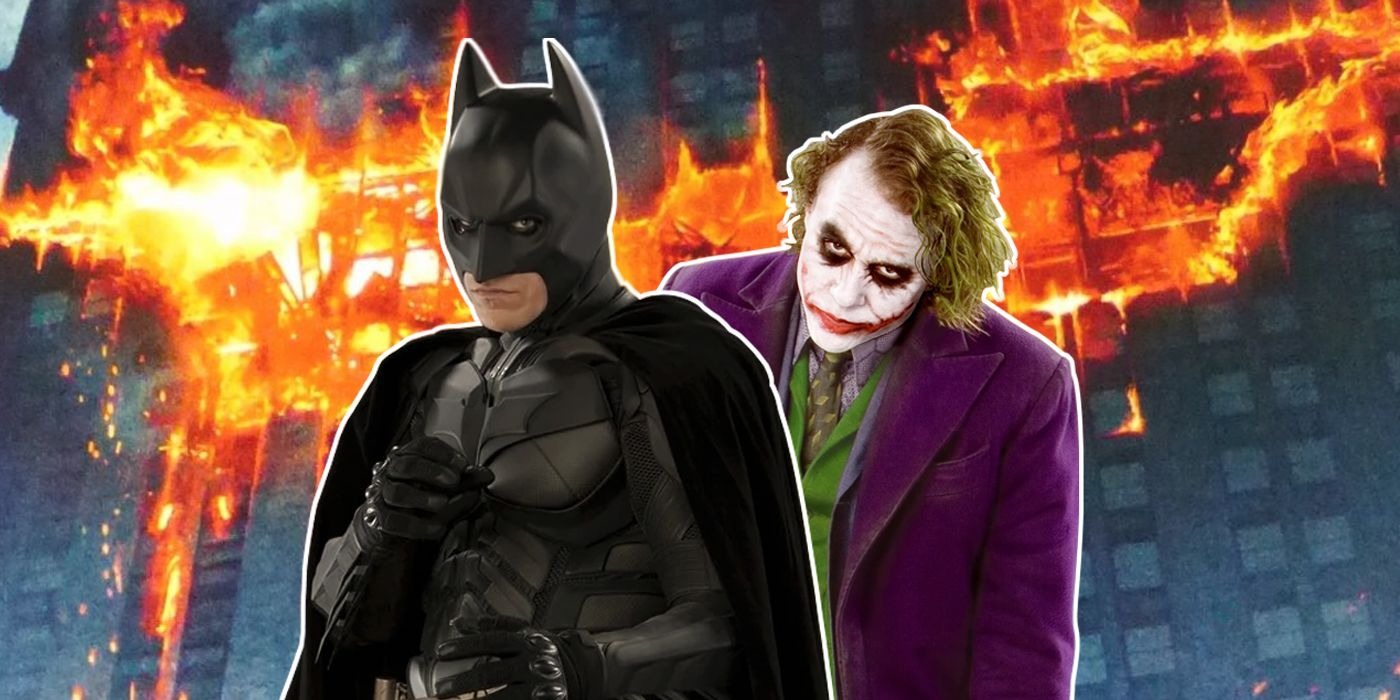When Christopher Nolan stepped up to direct Batman Begins in 2005, audiences were just recovering from the last live-action version of the hero, which had George Clooney under the mask. Nolan didn’t just reboot Batman—he reset the entire tone, offering a darker, more grounded approach to Bruce Wayne’s story.
That foundation laid the groundwork for what would come in The Dark Knight (2008), and though expectations were high, Nolan’s sequel went well beyond anything people imagined.
With The Dark Knight, Nolan altered the structure of superhero cinema. Christian Bale returned with a more complex Batman, and the film blended visually impressive sequences with deep moral questions and complicated character arcs.

The story develops a core theme about morality, especially through the battle between Batman and Heath Ledger’s Joker. As the film pushes toward its final act, it delivers a gripping and emotionally charged confrontation that wraps up Gotham’s central conflicts without relying too heavily on over-the-top action.
Joker’s final scheme begins to take shape as he steps up his campaign against Batman. Though he appears to be working with Gotham’s underworld, his real objective is to push society into chaos by testing human nature.
Rachel Dawes’ death becomes a turning point—Joker manipulates Harvey Dent, steering him into becoming a vengeful figure, while Bruce Wayne becomes even more driven to uphold his moral convictions.
The confrontation peaks at an abandoned construction site, where Joker takes civilians hostage and puts them—and the city—through a twisted ethical dilemma using two ferries wired to explode. Meanwhile, Harvey Dent threatens Gordon’s family with a gun.
The Final Sequence in The Dark Knight
Thanks to a controversial citywide sonar system developed by Lucius Fox, Batman manages to pinpoint Joker’s exact location. Gotham is in a state of emergency, and two ferries are attempting to escape: one carrying innocent citizens, the other transporting criminals.
Joker has placed explosives on both vessels, giving each one control over the other’s detonator. He tells them if no one presses the button, both ships will explode. At the same time, he disguises his thugs as hostages and dresses the actual hostages as his men, adding another layer of chaos.
Batman, deciding to intervene directly without SWAT support, tackles the situation on his own—with only Lucius guiding him via comms. He disables the police without harming them, using gadgets and cable lines to suspend them from the edge of the building.
Once inside, he identifies Joker’s real goons and takes them down, just like in earlier scenes. As he heads to the upper floors to face Joker himself, vicious dogs attack, bringing back memories of earlier scenes where his old suit couldn’t withstand bites. Thanks to Lucius Fox’s improved design, Batman manages to overcome the attack and reach Joker.
Batman uses his new gauntlets to fire projectiles at Joker, injuring him and pushing him over the edge. But rather than letting him fall, Batman secures him with his grapple. He refuses to let Joker die, staying true to his values despite all the destruction Joker has caused.
Batman’s Confrontation With Two-Face
After securing Joker, Batman changes focus to Harvey Dent, who now calls himself Two-Face and is threatening to kill Gordon’s son. Together, Batman and Gordon try reasoning with him, but Dent refuses to back down.
Finally, Batman is forced to shove Dent off the ledge to save the child. With Harvey dead, Gordon and Batman agree to keep the truth hidden from the public. Bruce insists on taking the blame for Dent’s crimes, believing Gotham still needs its White Knight. He flees as police officers pursue him, sacrificing his name for the greater good.
Understanding Joker’s Ferry Trap
Joker’s twisted experiment involving the ferries reveals his view on human morality. His goal isn’t just to kill people—it’s to prove that under pressure, regular citizens will act just as selfishly and violently as criminals.
By setting up a scenario where both prisoners and civilians must choose whether to detonate the other’s boat, Joker presents a cruel moral dilemma. He’s convinced people will abandon their morals when their own lives are at risk.
However, what happens challenges that assumption. On the civilian ferry, no one is willing to push the button. Surprisingly, on the prisoner ferry, the most hardened inmate takes the detonator and throws it overboard, refusing to be a murderer.
Joker had hoped at least one group would take the bait, proving his point about humanity’s selfishness. But both groups defy him, and the ferry scene ends without either explosion.
The deeper idea here touches on the human tendency to trust others even in impossible situations. This mirrors the structure of the Prisoner’s Dilemma, which examines whether individuals will cooperate when placed in high-stakes decisions. Gotham’s people prove Joker wrong, showing that kindness and restraint still exist.
What Becomes of Joker by the End of the Film
Though Batman defeats him, Joker doesn’t appear discouraged. As he dangles upside down from the building, he laughs—confident that he has already won in another way. Joker believes that if Batman had killed him, he would have succeeded in breaking Gotham’s protector. But when Bruce saves him, Joker loses that part of his twisted game.

Batman refuses to kill Joker, even though he’s responsible for so much destruction and pain. This reinforces Bruce’s belief that moral lines should never be crossed. Earlier in the film, mob boss Sal Maroni noted that criminals fear Joker because he doesn’t follow rules.
Batman’s victory here rests not only in stopping Joker but in maintaining his code. While Joker is captured and likely imprisoned in Arkham, the film never confirms his fate, partly because Heath Ledger’s passing meant the character’s story couldn’t continue. Still, the way his arc ends leaves a lasting impact.
Why Joker’s Influence Lives On Through Two-Face
As Joker is caught, he still clings to one final act of destruction. He reveals that his real plan wasn’t the ferry dilemma, but rather corrupting Harvey Dent. Turning Gotham’s most trusted figure into a ruthless killer was the Joker’s goal all along. He explains that once the city learns its hero has fallen, it will spiral into anarchy. For Joker, Two-Face is his final gift to the city.
And he nearly pulls it off. Dent turns against everyone involved in Rachel’s death, deciding their fates with a coin flip. He wounds Batman, survives the fall, and then threatens Gordon’s child. In a move reflecting the pain he felt during Rachel’s final moments, Dent wants Gordon to suffer the same loss. Batman stops him by pushing him to his death.
Even without knowing it, Joker comes close to achieving his goal. Harvey Dent does become a villain and nearly kills a child. Joker corrupts Gotham’s most upright citizen and makes Batman do something he always swore not to—kill.
Even though Bruce acted out of necessity, that fact would amuse Joker immensely. If he had known how things ended, Joker would have considered his mission fulfilled.
Alfred’s Decision To Burn Rachel’s Letter
Earlier in the film, Rachel had written Bruce a letter, explaining that she had chosen Harvey and would not wait for Bruce to give up being Batman. Alfred, upon reading it after her death, decides not to share its contents. Instead, he quietly burns the letter during the film’s closing montage. He chooses to protect Bruce from more emotional pain.
Alfred understands that Bruce is already devastated by Rachel’s loss. Giving him a letter revealing that she had moved on would only deepen his suffering. By burning it, Alfred helps Bruce hold on to the belief that Rachel might’ve still been waiting for him. His action is one final gesture of love and protection from a man who has always looked out for Bruce’s emotional wellbeing.



